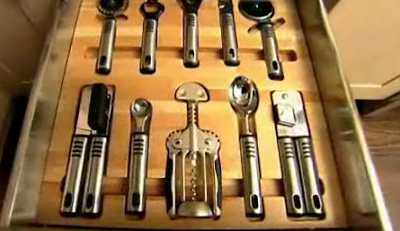I have a new partner who called me obsessive once.
“Eh?” I asked.
“Everything has to be just so. When you come in you make sure the collars are organized and facing the same direction, you fold over the ends of the tape and stack it in a certain order, you make sure the handles on the bags are easy to grab…”
“I’m not obsessive… have you seen my car?”
“Well, you are here.”
And it’s true. When I show up in the morning, I do my damnedest to ensure that all of our equipment is as stocked, ready, and prepared as possible. I’m the guy who checks the integrity of the air-filled gaskets on the BVM masks, and considers two spare O2 tanks one and one none. If my blood pressure cuffs aren’t labeled, I label them, and I ensure my map book is turned to the correct page.
And all of that may sound funny, because everybody knows that one of the hallmarks of EMS is improvisation, the ability to adapt to unusual situations and “make do.” If you’re juking around at a chaotic scene and discover that you haven’t got any splints, or your stretcher strap is broken, or your patient is dangling over the side of a balcony and needs to be boarded, you see what you have and use your noodle and make it work. Not long ago I saw somebody apply pressure to a laceration on top of a patient’s head by tying a bandage to both stretcher rails and rubber-banding it over their skull like a bow-and-arrow. Why not?
We find a way. So why am I so anal about being prepared while we’re still standing on solid ground?
The fact is, in this job, things are going to go wrong. They just are. And you’re going to handle them the best you can. But if too many things go wrong, the situation may reach a breaking point — your capacity to “adapt and overcome” is not infinite.
Have you ever read a book or watched a show about a major disaster? Plane crashes, reactor meltdowns, bridge collapses. What they have in common is that numerous intelligent people usually foresaw the possibility of such an event, and so they designed systems and safeguards to prevent it from happening. When disaster happens nonetheless, it isn’t because one thing went wrong. It’s because five, six, twelve things went wrong. The backups to the backups to the backups failed. More problems occurred simultaneously than anybody expected..
In this job, too, the only time when feces hit fans is when problems accumulate. It’s not that the patient was sicker than you expected. Or that the stairs were rickety and covered in snow. Those are a nuisance. It goes from whoopsie to trainwreck when you didn’t bring your stairchair and your suction. Then when you go back, the chair falls open while you’re walking, and as you try to fold it you trip over your untied laces, and when you finally get inside you realize the suction canister is missing a cap and won’t hold pressure. And then once you get the patient extricated they’re already unconscious, but you can’t find any Yankauer tips in the truck, and by the time you do they’ve stopped breathing…
See? With this job, even at the best of times, the line between well-in-hand and circling-the-drain can be pretty slim, and once you’re on that slope it’s hard to recover. The only way to stay safely in control is to create a buffer, and that means doing everything you can to prepare yourself when you have the chance, because you won’t always have a chance. If you don’t bother dotting your I’s and crossing your T’s before you enter the mix, then when things inevitably go wrong, the sum of those unhingings may be too much to handle.
Consider your emergency responses. It’s a safe bet that you’re going to drive past the address, or turn the wrong way, or get caught behind the world’s slowest schoolbus. Something is going to cause problems, whether it’s your dyslexic partner who confuses Gable Street with Bagel Street, or you forgetting the apartment number three times in a row. But that’s just a small delay. It won’t be a real problem unless you also stopped to pee before leaving the base, or forgot where your boots were, or had to spend five minutes backing out of where you parked. In that case, you already burned through your margin for error, and now when the unexpected (but inevitable) comes along, you’ve got no slack left.
In short, you can be the best in the world at rolling with the punches, and in this job, you ought to be. But that doesn’t mean you shouldn’t also try to be prepared to the point of obsessiveness. One lays a foundation for the other, and when you habitually have both to work with, you can handle whatever comes your way; if you’ve only got one, you’ll be lucky to get through your shift.





Recent Comments